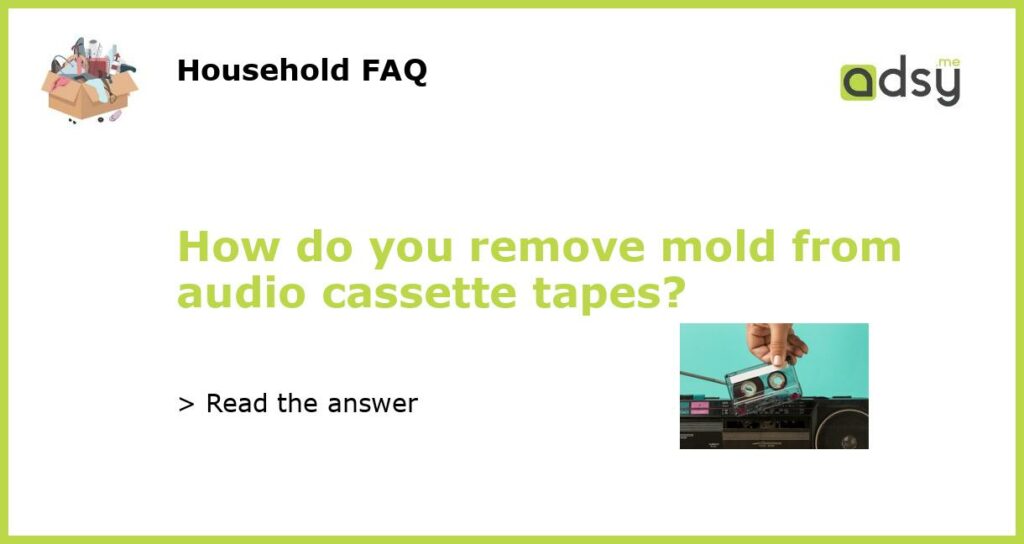Understanding the Problem of Mold on Audio Cassette Tapes
It is not uncommon for audio cassette tapes to develop mold over time, especially if they are stored in damp or humid environments. Mold spores can thrive on the porous surface of the tape, eventually causing damage to the magnetic coating and interfering with the playback quality. While mold on tapes can be a frustrating issue for music lovers, there are ways to remove it and salvage the recordings.
Gathering the Supplies You Will Need
To remove mold from your audio cassette tapes, you will need a few essential supplies. These include a clean workspace with good ventilation, gloves, a mask, 70% isopropyl alcohol, distilled water, a soft-bristled toothbrush, and a microfiber cloth. It is important to avoid using bleach, ammonia, or other harsh chemicals that could further damage the tapes.
Removing Mold from Your Audio Cassette Tapes
The first step in removing mold from your audio cassette tapes is to gather the supplies and set up your workspace. Put on your gloves and mask to protect yourself from exposure to mold spores. Next, carefully remove the tapes from their cases and gently brush off any visible mold with a soft-bristled toothbrush. Use a microfiber cloth to wipe away any debris or particles.
Next, soak a clean cloth in a mixture of 70% isopropyl alcohol and distilled water. The alcohol will kill any remaining mold spores and disinfect the tape’s surface. Wipe the cloth gently over the tape, being careful not to apply too much pressure that could damage the magnetic coating. Allow the tape to air dry completely before rewinding or playing it to ensure no moisture is left behind.
Taking Preventative Measures to Avoid Mold Growth
Once you have removed mold from your audio cassette tapes, it is essential to take preventative measures to avoid future growth. Store your tapes in a cool, dry environment with good ventilation, and avoid exposing them to excessive moisture or high temperatures. It is also a good idea to clean the tapes regularly with a soft-bristled toothbrush to remove any debris or particles that could attract mold spores.
Mold on audio cassette tapes can be a frustrating and potentially damaging issue, but it is possible to remove the mold and salvage the recordings with the right supplies and techniques. Remember to take preventative measures to avoid future mold growth, and enjoy your clean and well-preserved tapes for years to come.


![The Number of the Beast (40th Anniversary) [CASSETTE]](https://m.media-amazon.com/images/I/515EXAs-OCL.jpg)
![Guardians Of The Galaxy: Awesome Mix Vol. 1 [CASSETTE]](https://m.media-amazon.com/images/I/51D2YTc-jmL.jpg)
![Abba Gold (Mc) [CASSETTE]](https://m.media-amazon.com/images/I/31Yk6b8kW-L.jpg)
